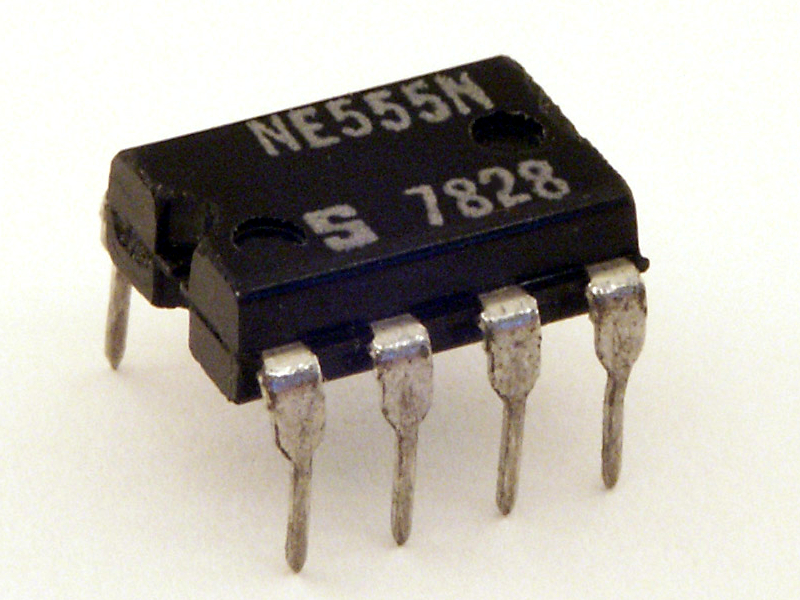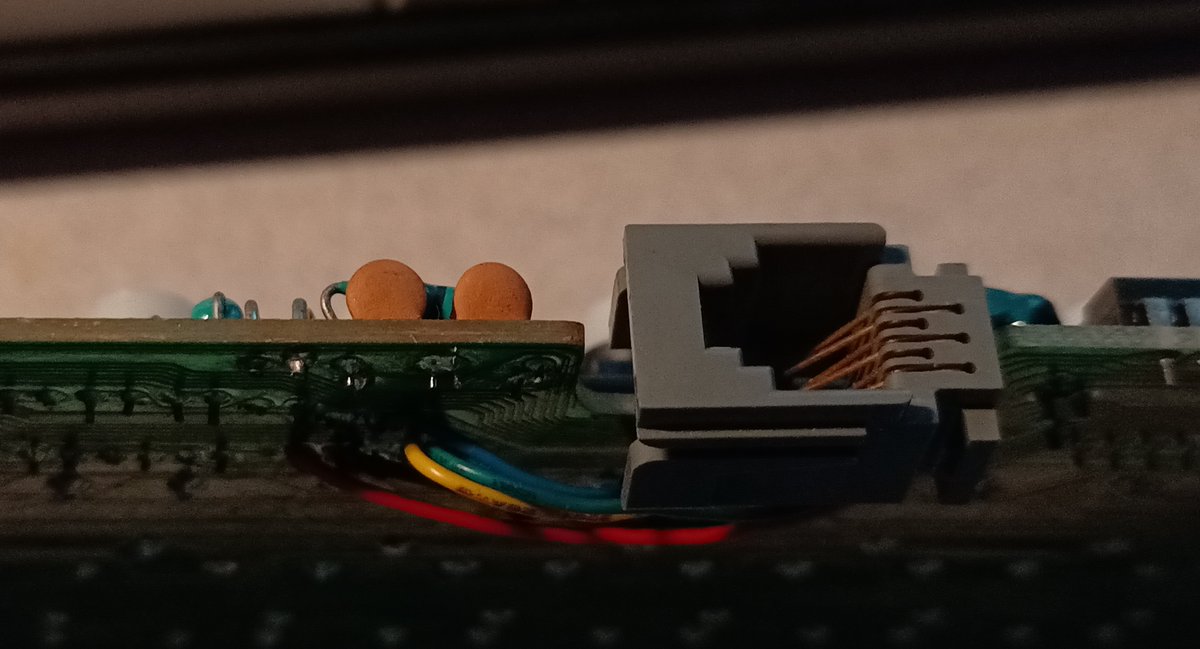
I was hacking a game and accidentally invented a word for when you think someone is trans and you're proud of them for coming out but then you find out they aren't

My go-to one is | but you would be surprised how many games do not bother having a | glyph.
So I go for ! or .
So by having consistent bracketing letters, I can visually search for them
More from foone
A fun fact on the wikipedia page for the metal–oxide–semiconductor field-effect transistor:
it is the most frequently manufactured device in history, and the total number manufactured from 1960-2018 is 13 sextillion.
That's 13,000,000,000,000,000,000,000.

Though this picture is a bit misleading.
Even with devices this small, we couldn't make 13 sextillion of them in 60 years.
So imagine a chip like this. It's the 555 timer, which is one of the most popular integrated circuits ever made.
In 2017, it was estimated a billion are made every year.

And at the heart of it is the die, which looks like this:
(from Ken Shirriff's blog)
https://t.co/mz5PQDjYqF

And that's fundamentally a bunch of CMOS transistors (along with some diodes and resistors), which are a type of MOSFET. How many of them are on a 555?
about 25. Not many, but it's a very simple chip.
it is the most frequently manufactured device in history, and the total number manufactured from 1960-2018 is 13 sextillion.
That's 13,000,000,000,000,000,000,000.

Though this picture is a bit misleading.
Even with devices this small, we couldn't make 13 sextillion of them in 60 years.
So imagine a chip like this. It's the 555 timer, which is one of the most popular integrated circuits ever made.
In 2017, it was estimated a billion are made every year.

And at the heart of it is the die, which looks like this:
(from Ken Shirriff's blog)
https://t.co/mz5PQDjYqF

And that's fundamentally a bunch of CMOS transistors (along with some diodes and resistors), which are a type of MOSFET. How many of them are on a 555?
about 25. Not many, but it's a very simple chip.
More from Internet
SolarWinds follow up. Very good tweet explaining what happened.
Basically what this means is that SolarWinds itself was exploited. Someone posted an infected update as legitimate (digitally signed), leading customers to download a bad update.
“Multiple trojanized updates were digitally signed from March - May 2020 and posted to the SolarWinds updates website” https://t.co/8e3bMFWXYu

FireEye then explains that infected organizations were approached and exploited. This is a separate Step 2.
At this point, information is already going to “malicious domains” without extra intervention, after the malware does nothing for “up to two weeks”

Hackers reportedly slipped malware into prior SolarWinds software updates, which gave them access to a "God-mode" for infected networks, including the Treasury and Commerce departments.
— Wes Wilson (@weswilson4) December 14, 2020
The Pentagon is also a SolarWinds customer.https://t.co/Srcoztssol https://t.co/OgMhAjJqPx
Basically what this means is that SolarWinds itself was exploited. Someone posted an infected update as legitimate (digitally signed), leading customers to download a bad update.
“Multiple trojanized updates were digitally signed from March - May 2020 and posted to the SolarWinds updates website” https://t.co/8e3bMFWXYu

FireEye then explains that infected organizations were approached and exploited. This is a separate Step 2.
At this point, information is already going to “malicious domains” without extra intervention, after the malware does nothing for “up to two weeks”

Well, this should be a depressing read -- notably because the UK and the US are both terrible when it comes to data protection, but the UK appears to be getting a pass. So much for 'adequacy'.
A few initial thoughts on the Draft Decision on UK Adequacy: https://t.co/ncAqc93UFm
The decision goes into great detail about the state of the UK surveillance system, and notably, "bulk acquisition" of data, and I think I get their argument. /1
For one, while the UK allows similar "bulk powers," it differs from the US regime both in terms of proportionality, oversight, and even notice. Some of this came about after the Privacy International case in 2019 (Privacy International) v Investigatory
Powers Tribunal [2019]) /2
Whereas, other bits were already baked in by virtue of the fact that the Human Rights Act is a thing (This concept doesn't exist in the US; rather we hand-wave about the Constitution and Bill of Rights, and then selectively apply it) /3
For example, UK bulk surveillance (I'm keeping this broad, but the draft policy breaksk it down), substantially limits collection to three agencies: MI5, MI6, and GHCQ). By contrast, it's a bit of a free-for-all in the US, where varying policies /4
At least we have a draft of the adequacy decision. I haven't read it yet, mostly because I'm afraid I'll be disappointed that it doesn't address the UK's penchant for surveillance. https://t.co/puJiVET2SJ
— Don Edwards (@DMEdwards) February 20, 2021
A few initial thoughts on the Draft Decision on UK Adequacy: https://t.co/ncAqc93UFm
The decision goes into great detail about the state of the UK surveillance system, and notably, "bulk acquisition" of data, and I think I get their argument. /1
For one, while the UK allows similar "bulk powers," it differs from the US regime both in terms of proportionality, oversight, and even notice. Some of this came about after the Privacy International case in 2019 (Privacy International) v Investigatory
Powers Tribunal [2019]) /2
Whereas, other bits were already baked in by virtue of the fact that the Human Rights Act is a thing (This concept doesn't exist in the US; rather we hand-wave about the Constitution and Bill of Rights, and then selectively apply it) /3
For example, UK bulk surveillance (I'm keeping this broad, but the draft policy breaksk it down), substantially limits collection to three agencies: MI5, MI6, and GHCQ). By contrast, it's a bit of a free-for-all in the US, where varying policies /4
































